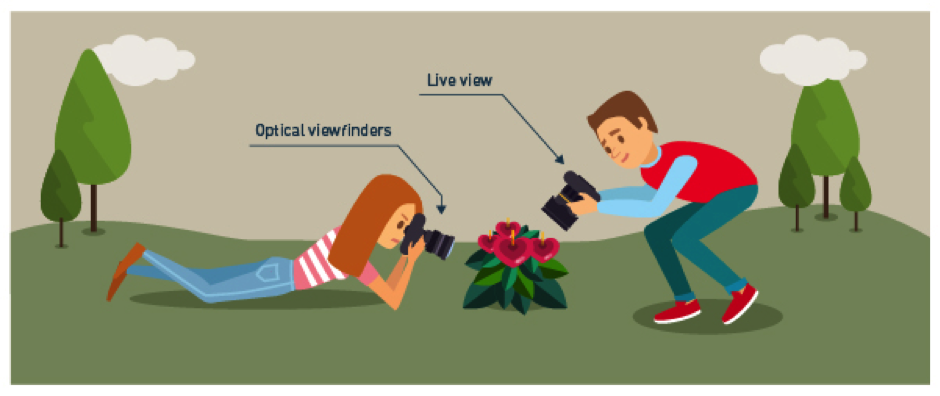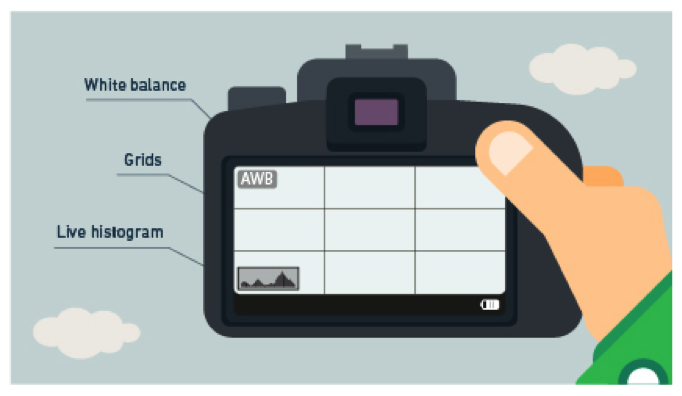The Pros & Cons of Live View in Photography | Photography Tips
In the world of photography, not all objects are created equal. Some cameras come stacked with an extensive list of kit, while others strip back to increase portability and decrease cost. In recent years, compact system cameras, or CSCs, have grown popular thanks to their small size. Most entry level CSCs do not have a viewfinder – but is this a problem?
The benefits of live view
Framing
For DSLR users and anyone who has ever picked up a digital camera is a familiar sight. It’s the digital display that pops up when you select it – showing the image you’re about to capture.
Unlike optical viewfinders, which show you an image as your eye sees it, your LCD live view shows you the image as your camera sees it. This makes live view perfect for framing landscapes, portraits and other shots where detail at the edges of the image is important.
You can also find angles with live view that would be next to impossible with a viewfinder – such as close up ground level shots of a flower.

Better focus
Live view settings are slower to find focus when you’re in need of a quick shot. However, if you have time on your hands, for long exposures and other shots that rely on minimal disturbance, you can achieve better focus with live view.
This works on two levels: when you’re in live view, any mirror in the camera is already raised to eliminate ‘mirror slap.’ Assuming you’re shooting with a tripod and remote shutter, this makes live view superior for sharp images.
Secondly, you can zoom in during live view and set your focus. This enables you to fine tune your focus point to set a perfect level of focus on your subject.
On-screen tools
When you shoot with live view, you get to incorporate a number of useful tools. One of which is a live histogram, which allows you to gauge light levels in each area of the image. This means you can find the correct exposure before you snap the image, rather than shooting and looking it up afterwards.
Another tool you’ll be able to use is grids, which vary in appearance – with the most popular option being four intersecting lines which help you compose images using the ‘rule of thirds’.

Finally, you’ll also be able to change white balance and see instant feedback on how the image will look before you shoot. This gives you greater control over what you get out of the camera, as less guesswork means more efficient shooting.
The negatives of live view
Autofocus
Cameras using the live view setting have a tendency to ‘hunt’ for autofocus far longer than when used in optical view. When shooting sports and other fast-moving action, live view seriously lags behind optical viewfinders.
This does not apply to all cameras, as lots of CSCs without viewfinders can quickly dial in on focus. This can also be remedied fairly simply by switching to manual focus. However, this slow focus can be a huge issue on lots of cameras and is one of the many reasons lots of photographers avoid live view entirely.
Distraction
Live view can take you ‘out of the moment’ when you’re shooting – forcing you to stand and assess an image rather than look through a viewfinder and take the shots you need. If you’re easily distracted, this can cause you to miss vital shots.
To summarise, live view is a tool to be exploited by photographers who want to take advantage of specific situations. When you’re shooting at an unusual angle or you want to frame a shot exactly as it’s going to be recorded, there’s no real substitute for live view. It’s not great for shooting fast moving sports – but as a part of a photographer’s arsenal, it’s a powerful weapon.
- By Andi Thomas
- 31 Aug 2016



































































